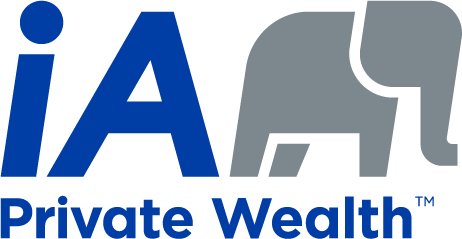Subscribe To Our Newsletter
Subscribe To Our Newsletter
Subscribe to our newsletter and receive free educational articles and videos each month.
Subscribe to our newsletter and receive free educational articles and videos each month.
Main Menu
Financial Foundations: Compound Interest
Hi! I’m Nick, and welcome to Financial Foundations. I’m going to cover several concepts of investing that may seem confusing and show you that they’re actually simpler than you may think. Let’s talk about compound interest.
What is compound interest? Well, when you invest your money, your goal is to earn interest on it, right? So let’s say you were to invest $1,000 and expected a 5% rate of return at the end of one year, your $1,000 would grow to $1,050. 5% of 1,000 is 50. Add that 50 to the 1,000 and you got $1,050. Simple right? But wait! What happens in years two, three, four and so on?
With compound interest, you earn interest on interest. Wait, what does that mean? Well, let’s look at our $1,000 again.
In your second of investing, with compound interest you’ll not only earn interest on your original $1,000 investment, but you’ll also earn interest on the $50 that you earned last year. So, you’ll earn 5% interest on $1,050, giving you a total of $1,102.50. 5% of $1,050 is 52.50. Add that to the $1,050 and you got $1,102.50.
So, why do you need to know this? Well, if you start investing earlier than later, you’ll really start to see your money build over the years. Look at this graph. Compounding becomes more effective each year because the amount of interest that you’ll earn on your money grows larger and larger as time progresses.
There’s compound interest for you! And there are many more seemingly confusing concepts that are much simpler than you actually think. I’m Nick and thanks for joining me on Financial Foundations. See you next time!
Financial Foundations: Compound Interest
Hi! I’m Nick, and welcome to Financial Foundations. I’m going to cover several concepts of investing that may seem confusing and show you that they’re actually simpler than you may think. Let’s talk about compound interest.
What is compound interest? Well, when you invest your money, your goal is to earn interest on it, right? So let’s say you were to invest $1,000 and expected a 5% rate of return at the end of one year, your $1,000 would grow to $1,050. 5% of 1,000 is 50. Add that 50 to the 1,000 and you got $1,050. Simple right? But wait! What happens in years two, three, four and so on?
With compound interest, you earn interest on interest. Wait, what does that mean? Well, let’s look at our $1,000 again.
In your second of investing, with compound interest you’ll not only earn interest on your original $1,000 investment, but you’ll also earn interest on the $50 that you earned last year. So, you’ll earn 5% interest on $1,050, giving you a total of $1,102.50. 5% of $1,050 is 52.50. Add that to the $1,050 and you got $1,102.50.
So, why do you need to know this? Well, if you start investing earlier than later, you’ll really start to see your money build over the years. Look at this graph. Compounding becomes more effective each year because the amount of interest that you’ll earn on your money grows larger and larger as time progresses.
There’s compound interest for you! And there are many more seemingly confusing concepts that are much simpler than you actually think. I’m Nick and thanks for joining me on Financial Foundations. See you next time!

